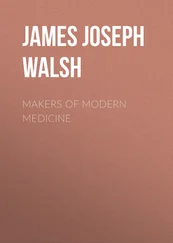James Walsh - Psychotherapy
Здесь есть возможность читать онлайн «James Walsh - Psychotherapy» — ознакомительный отрывок электронной книги совершенно бесплатно, а после прочтения отрывка купить полную версию. В некоторых случаях можно слушать аудио, скачать через торрент в формате fb2 и присутствует краткое содержание. Жанр: foreign_prose, psy_theraphy, foreign_edu, foreign_antique, на английском языке. Описание произведения, (предисловие) а так же отзывы посетителей доступны на портале библиотеки ЛибКат.
- Название:Psychotherapy
- Автор:
- Жанр:
- Год:неизвестен
- ISBN:нет данных
- Рейтинг книги:4 / 5. Голосов: 1
-
Избранное:Добавить в избранное
- Отзывы:
-
Ваша оценка:
- 80
- 1
- 2
- 3
- 4
- 5
Psychotherapy: краткое содержание, описание и аннотация
Предлагаем к чтению аннотацию, описание, краткое содержание или предисловие (зависит от того, что написал сам автор книги «Psychotherapy»). Если вы не нашли необходимую информацию о книге — напишите в комментариях, мы постараемся отыскать её.
Psychotherapy — читать онлайн ознакомительный отрывок
Ниже представлен текст книги, разбитый по страницам. Система сохранения места последней прочитанной страницы, позволяет с удобством читать онлайн бесплатно книгу «Psychotherapy», без необходимости каждый раз заново искать на чём Вы остановились. Поставьте закладку, и сможете в любой момент перейти на страницу, на которой закончили чтение.
Интервал:
Закладка:
Psychic States.—There are a number of human states representing extremes of sensory and intellectual conditions in man, that have always attracted attention, and in recent years have been special objects of investigation by physiologists. Natural sleep is one of these; the unconsciousness of narcotism or anesthesia is another. Hypnotism is allied to both of these, and would seem to lie on a plane between them. Then there are various states of exaltation in which sensations fail to produce their usual effect. Those escaping from a fire, or passing through a severe panic of any kind may sustain all manner of injuries without being aware of them. Martyrs, for all manner of causes, are able to withstand suffering with such equanimity, and sometimes even joy, that it is evident that they cannot feel, as would people under ordinary conditions, the pain that is being inflicted on them.
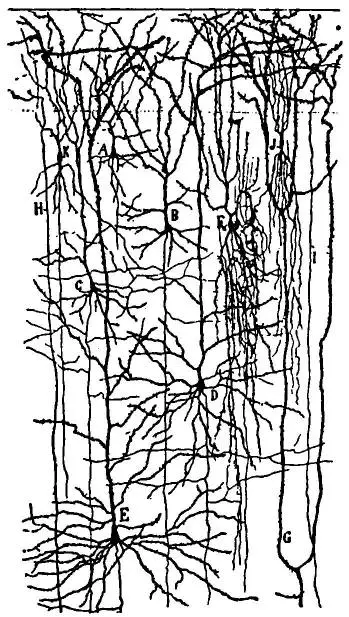
Fig. 5.—FIRST, SECOND AND THIRD LAYER OF THE ANTERIOR CENTRAL CONVOLUTION (THAT IS, OF THE ASCENDING FRONTAL CONVOLUTION) OF THE BRAIN OF A CHILD ONE MONTH OLD. A, B, and C, little pyramids; D and E, medium-sized pyramids; F, cells with two sets of tufts; their axis cylinders resolved into end tufts; G, protoplasmic layer that comes from one of the large pyramids of the fourth layer; H and I, fine dentrites of the cells of the sixth and seventh layer; J, small cells with two end tufts; K, spindle cells with long axis cylinder. (Raymon y Cajal.)
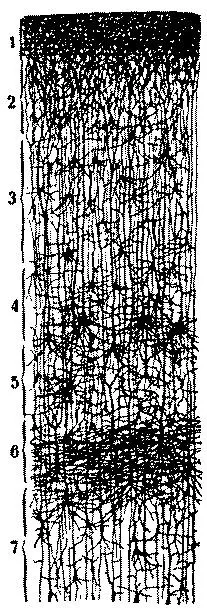
FIG. 6.—LAYERS OF THE POSTERIOR CENTRAL OR ASCENDING PARIETAL CONVOLUTION OF A NEWBORN CHILD. 1. plexiform layer; 2. small pyramids; 3. medium-sized pyramids; 4. external large pyramids; 5. small pyramids and star shaped cells; 6, deep layer of large pyramids; 7, spindle and triangular shaped cells. (Raymon y Cajal.)
In the midst of intense mental preoccupation one may hold so cramped a position as would be quite impossible for the same length of time with the faculties normally engaged. There are pathological conditions, like hysteria, in which the pain and fatigue sense may, for a time at least, be quite in abeyance.
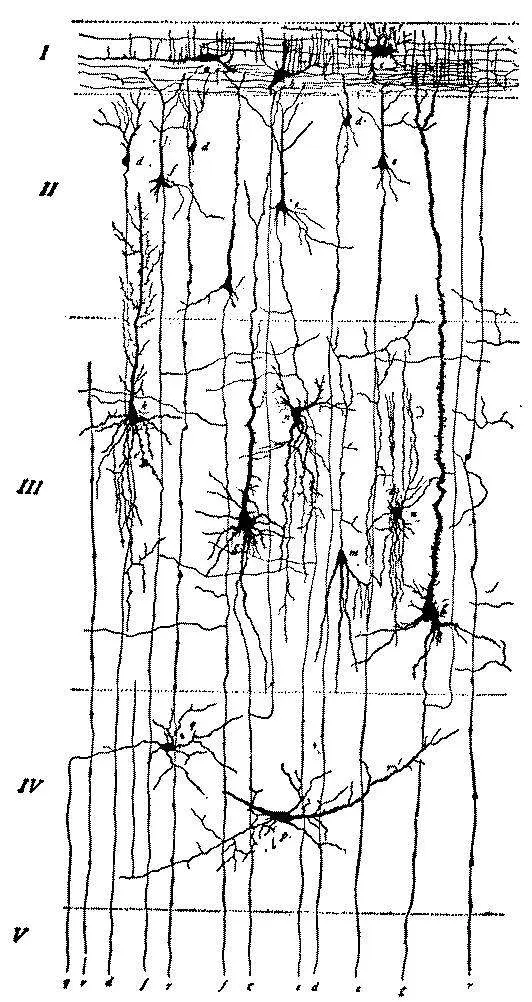
FIG. 7.—DIAGRAM OF CELLS OF CEREBRAL CORTEX (after Starr, Strong and Leaming). I, superficial layer; a, fusiform; b, triangular; c, polygonal cells of Ramon y Cajal; II, layer of small pyramids; d, smallest; e, small; f, medium-sized pyramidal cells with axones descending to the white matter and giving off collaterals in their course; III, layer of large pyramidal cells; g, largest (giant) pyramidal cells; k, large pyramidal cells with very numerous dendrites; all pyramidal cells are seen to send long apical dendrites up to I; m, Martinotti cell with descending dendrites and ascending axone; n, polygonal cells; IV, deep layer; p, fusiform cell; q, polygonal cell; V, the white matter containing the axones from the pyramidal cells, d, e, f, g, and from a cell of the deep layer q; r, neuroglia fibers. (Barker.)
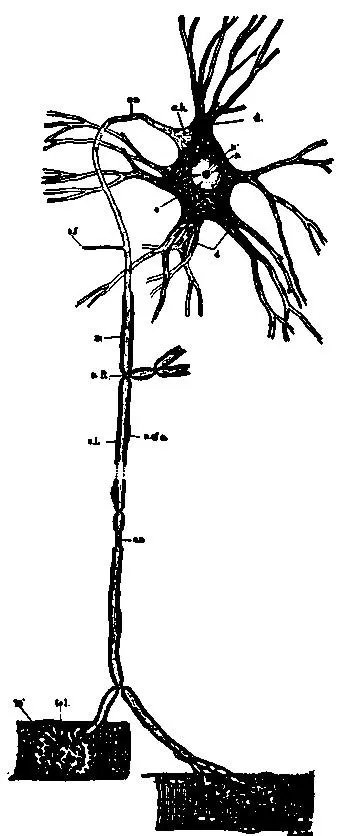
FIG. 8.—SCHEME OF LOWER MOTOR NEURON. The motor-cell body, with protoplasmic processes, axis cylinder, side fibrils or collaterals, and end ramifications, represents parts of a neuron. a. h., axon hillock devoid of Nissl bodies, showing fibrillation; ax., axon. This process near the cell body becomes surrounded by myelin, m., and a cellular sheath, the neurilemma (not an integral part of the neuron); c, cytoplasm showing Nissl bodies and lighter ground substance; d, protoplasmic processes (dendrites) containing Nissl bodies; n., nucleus; n., nucleolus: n. r., node of Ranvier; s. f., side fibril; n. of n., nucleus of neurilemma; tel., motor end plate or telodendrion; m., striped muscle fiber; s. l., segmentation of Lautermann. (Barker.)
Neurons.—With the advance in our knowledge of brain anatomy, various explanations for these curious conditions have been suggested. The discovery that the central nervous system is composed of a large number of separate units, and not of a feltwork of continuous fibers with cells here and there, revolutionized all previous attempts at explanation of these conditions. We know now that it is not fibers but cells that are the most important components of the brain and spinal-cord substance, and that, indeed, the fibers are only prolongations of cells. The central nervous system is made up of nerve cells with various appendages, and each one of these cells and its appendages is called a neuron. These appendages are of two kinds, one the axon, the long conducting fiber which transmits the nerve force of the cell, the other the dendrons or connecting elements by which the cell is linked with the axon of another cell. The contact of the axon of one neuron with the dendrons of another is called a synapse. Each neuron does not extend to and from the brain and the periphery, but series of neurons connect the surface of the body with the brain. There is usually a group of neurons in the path from the surface to the brain cortex. The peripheral neuron for sensation runs from the surface of the body to the spinal cord, while for motion it runs in the opposite direction. There is a secondary neuron in each chain that runs up or down the spinal cord to and from the base of the brain. A third—sometimes, perhaps, a fourth—neuron connects in the two directions, afferent and efferent, the cortex and the base of the brain.
Neuronic Movement .—Duval, the French anatomist and histologist, suggested the possibility of voluntary and involuntary movement in the neurons or nerve cells themselves, thus making and breaking connections.
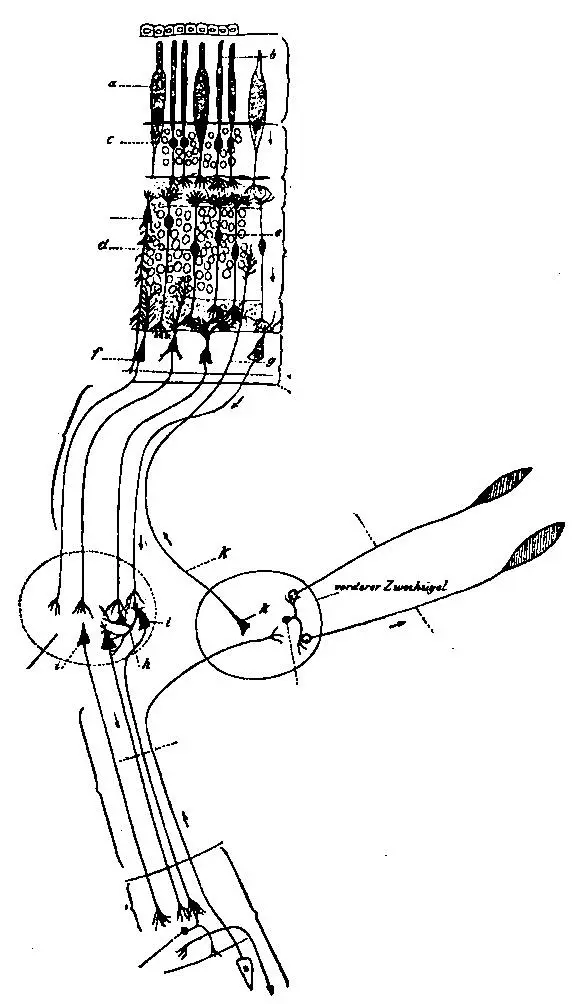
FIG. 9.—SCHEME OF THE VISUAL CONDUCTION PATHS (after C. von Monakow). a, rods and cones; b, rods; c, nuclei of rods; d, bipolar cells for the cones; e, bipolar cells for the rods; f, large multipolar ganglion cells giving rise to the axons of the N. opticus; g, centrifugal axon of a neuron, the cell body of which is situated in the collieulus superior, its telodendron being situated in the retina; h, Golgi cell of Type II, or dendraxon in the corpus geniculatum laterale; i, neuron connecting the corpus geniculatum laterale with the lobus occipitalis, its axon running in the radiato occipito-thalamica (Gratioleti). The visual impulses are indicated by the arrow. (Barker)
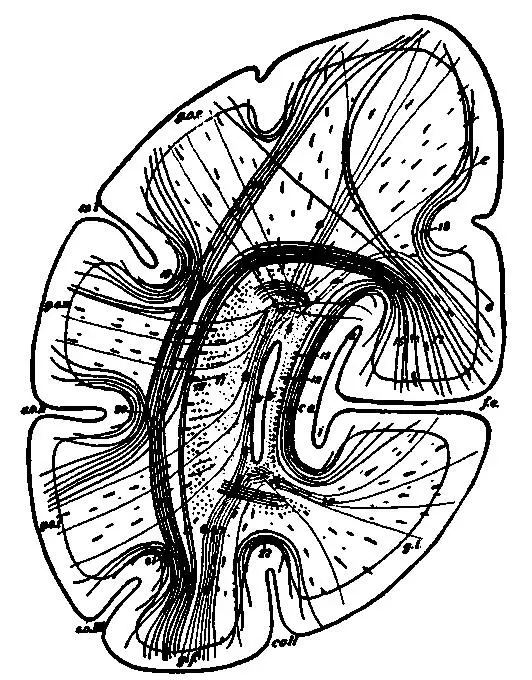
FIG. 10.—SCHEMATIC FRONTAL SECTION THROUGH THE OCCIPITAL LOBE ILLUSTRATING MANIFOLD CONNECTIONS IN A SINGLE LOBE (after H. Sachs), v, cornu posterius ventriculi lateralis; f. c, fissura calcarina; b, upper division: i, lower division; coll, sulcus collateralis; s. o. I, sulcus occipitalis superior (fissura interparietalis); s. o. II, sulcus occipitalis medius; s. o. III, sulcus occipitalis inferior; c. a., calcar avis; g. l., gyrus lingualis; g. f., gyrus fusiformis; g. o. s., gyrus occipitalis superior; g. o. m., gyrus occipitalis medius; g. o. i.. gyrus occipitalis inferior; c, cuneus; 1-10, forceps; 11-14, stratum sagittale internum: 15, stratum sagittale externum; 16, stratum calcarinum; 17, stratum cunei transversum; 18, stratum proprium cunei; 19, stratum proprium s. o. I; 20, stratum proprium s. o. II; 21, stratum proprium. s. o. III; 22, stratum proprium, s. coll.; 23, stratum profundum convexitatis. (Barker.)
Читать дальшеИнтервал:
Закладка:
Похожие книги на «Psychotherapy»
Представляем Вашему вниманию похожие книги на «Psychotherapy» списком для выбора. Мы отобрали схожую по названию и смыслу литературу в надежде предоставить читателям больше вариантов отыскать новые, интересные, ещё непрочитанные произведения.
Обсуждение, отзывы о книге «Psychotherapy» и просто собственные мнения читателей. Оставьте ваши комментарии, напишите, что Вы думаете о произведении, его смысле или главных героях. Укажите что конкретно понравилось, а что нет, и почему Вы так считаете.







